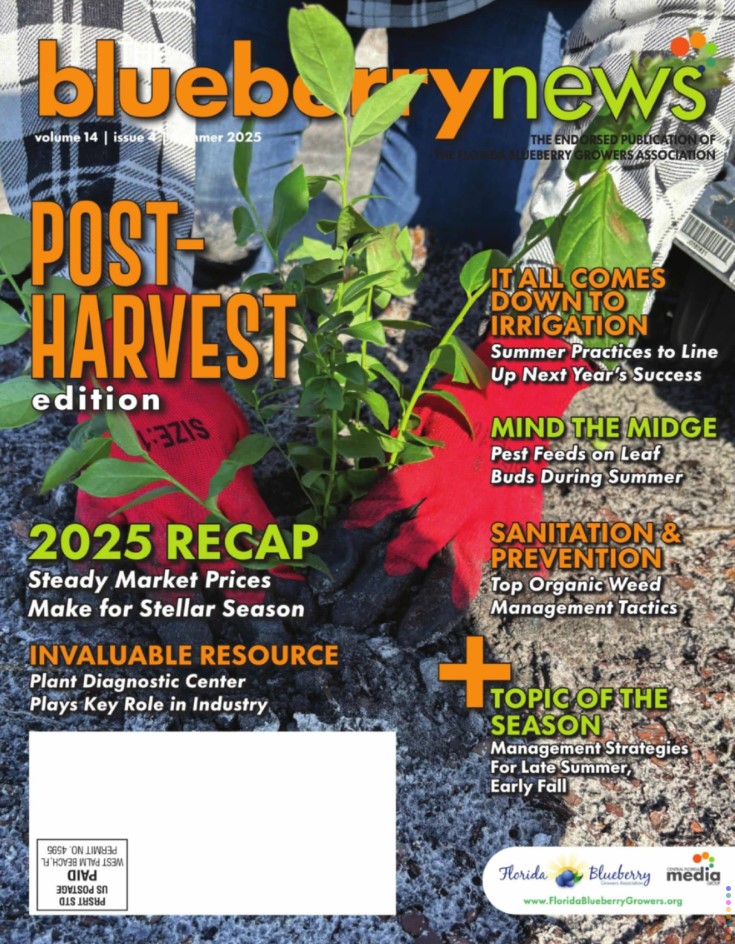Looking for Answers: Crop Insurance and the Florida Blueberry Market
<a href="http://52.23.187.59/wp-content/uploads/2016/07/crop-insurance-graphic-e1468335039586.jpg"><img src="http://52.23.187.59/wp-content/uploads/2016/07/crop-insurance-graphic-e1468335039586.jpg" alt="crop-insurance-graphic" width="575" height="322" class="aligncenter size-full wp-image-2414" /></a>
THIS PAST SEASON raised some questions about blueberry crop insurance. To find answers we need to look at how the crop insurance impacted our local markets. First, let’s take a few steps back. We need to examine the basic policy design and the geographic area the blueberry crop insurance services. is information will help uncover the answers to questions and provide solutions to help Florida blueberry growers better manage growing risks.<!--more-->
The policy design is quite simple. The basic and most widely utilized crop insurance plan for blueberries is the Actual Production History (APH) plan. As the name implies, this plan is based on the average historical production on the farm. The recorded years of production can be from four to ten years. It is based on the total pounds of berries marketed or sold, including u-pick. In any case, there has to be some type of documentation of the marketed berries. Florida blueberries are grown to be sold during a specific marketing window. The documented production on policies are generally the berries sold in this time frame. That window was barely cracked this year due to the lack of chill hours this season. We experienced some of the most significant drops in Florida blueberry production history this year. Even though the insufficient number of chill hours is a covered loss, the berries left in the field after the marketing window had been slammed shut were counted as harvested production. The reason: these berries were considered production stems from how the policy deals with abandoning a field. This is a good concept in theory. No one wants anyone to take advantage of the insurance and get paid for walking away from a field when they have marketable berries. The definition of “abandon,” as defined by Common Crop Insurance Policy, is:
<em>Failure to continue to care for the crop, providing care so insignificant as to provide no benefit to the crop, or failure to harvest in a timely manner, unless an insured cause of loss prevents you from properly caring for or harvesting the crop or causes damage to it to the extent that most producers of the crop on acreage with similar characteristics in the area would not normally further care for or harvest it.</em>
<a href="http://52.23.187.59/wp-content/uploads/2016/07/TBN-fact-graphic.jpg"><img src="http://52.23.187.59/wp-content/uploads/2016/07/TBN-fact-graphic.jpg" alt="TBN-fact-graphic" width="575" height="250" class="aligncenter size-full wp-image-2415" /></a>
Varying interpretations of this definition exist. There is no definitive answer, but there is a solution. Berries were left in the field this past season because the lack of chill hours pushed most of the crop past the market window. This shortened the market window for Florida and blueberries further north were being purchased. We all know once this northbound train is set in motion, there is no stopping it. The solution to this problem is Whole-Farm Revenue Protection (WFRP). This policy covers revenue. It will cover low prices. Once the marketing price gets to the same point as the cost of bringing the berries to market, the production left in the field will not be counted as marketable berries. The farmer can cut their losses and the berries in the field will not be counted as production.
WFRP has restrictions on participation. Therefore, there are still changes to be addressed concerning the APH plan and the marketing window. One very important change to consider is the insurance period. The current insurance period ends on September 30 for Michigan and September 15 for the rest of the country. This means the end of the insurance period for southern highbush blueberry varieties grown in Florida is the same for Rabbiteye bush varieties in Georgia and the same as lowbush grown in Maine. Does this really make sense? Would it be possible for there to be a different ending date for Florida? For example, if June 1 were the end of the insurance period, the remaining berries wouldn’t be counted as production. The answer to this question lies with us all. Changes to federal insurance programs don’t happen overnight. Luckily, this particular change would not require rewriting the policy, so there is an outside chance it could happen a little quicker. Get involved by supporting your local and state grower associations. They are working hard to make these types of changes. A simple phone call to your local federal legislator can make a big difference. Working together and helping each other could be the answer to growing and thriving in the years to come.
CREDIT
article by FRED SIMONS, III, CLU, ChFC
<em>ABOUT THE AUTHOR: Fred Simons, III, CLU, ChFC is a crop insurance expert with Carden & Associates, Inc. based in Winter Haven, Florida. Fred brings more than 22 years of experience to the insurance industry, and has a deep-rooted knowledge in the specific risk-management needs that are unique to Florida’s agriculture. For questions or comments, call Fred at (863) 291-3505 or email him at <a href="mailto:[email protected]">[email protected]</a>. On the Web: <a href="http://www.cardeninsurance.com" target="_blank">www.cardeninsurance.com</a>.</em>





